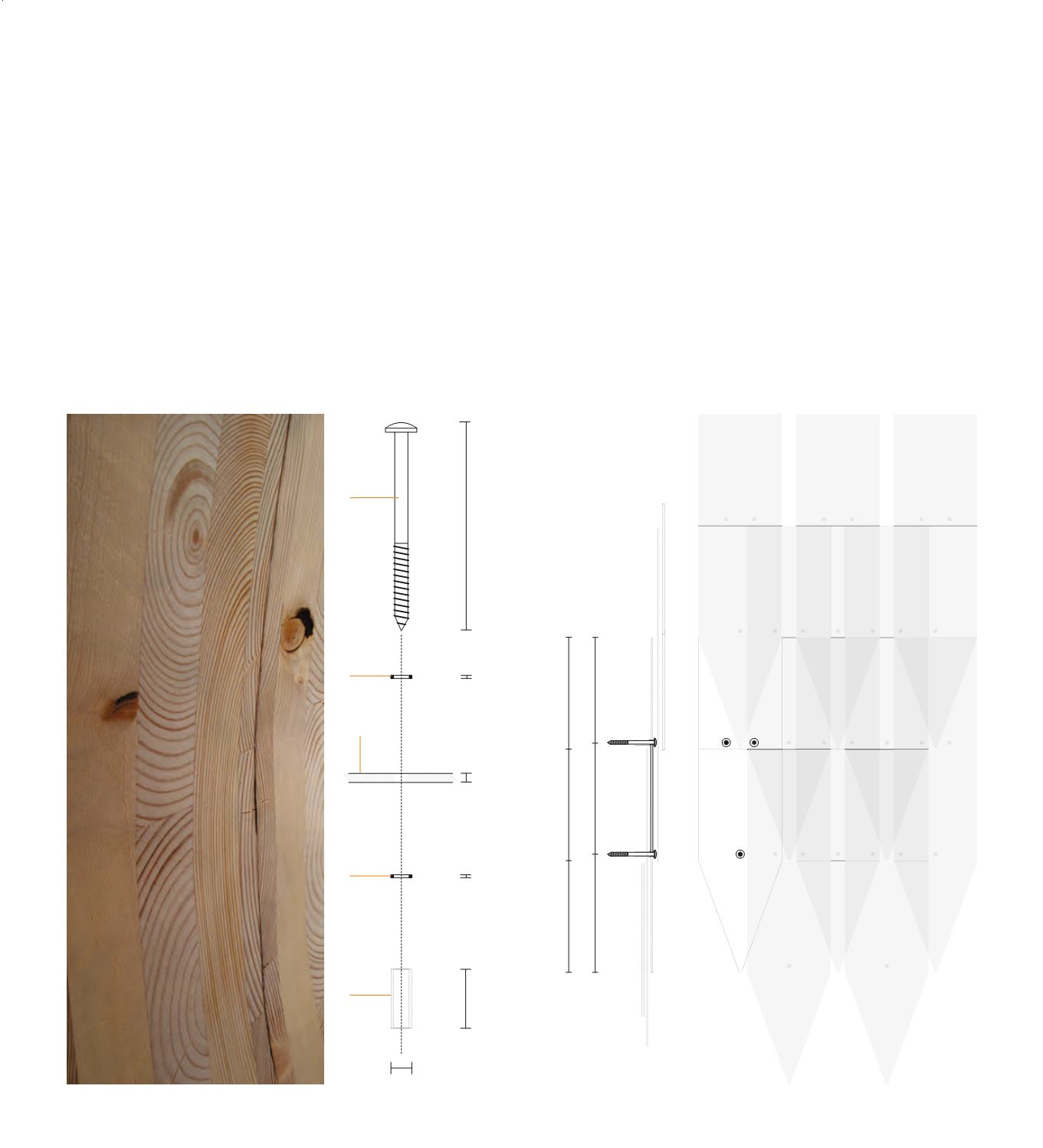

92
CLADDING
For covering an organic shape with a number of complex
forms on the surface, there are mainly two principles to follow:
either lots of small entities following each other or one piece
of material with the potential to be formed just like the wood
surface. To keep computers and big machines to a minimum,
as well as keeping the animal discussion in mind, our solution
fell on the first. Our starting point was wood shingles, but
even though it is a flexible principle on the organic shape,
we found several challenges. First and foremost, the battens
are problematic in meeting the form. An alternative we have
suggested is spacers; elements between the shingles and the
primary structure attached to the screws, which keep every
shingle lifted from the primary structure (fig, 19 and 20). The
crucial point in this system is to keep every shingle in balance.
This is partly why we came up with plastic shingles; they allow
for three screw holes without cracking and are soft enough to
form itself by each others.
The shingles are placed over each other in a 1/3-pattern,
while the screws are offset 1 cm from this pattern. (fig 21) This
enables each shingle to stand disconnected from the others.
The three fixing points balance the shingle. The distances keep
the shingle soft enough to bend without cracking where they are
overlapping each other.
The material is polycarbonate, a pliable plastic. This is a
material which is easy to find as cheap left-overs. The final
expression is therefore dependent on colors available. We
see the potential of sorting out the colors and use them for
characteristic movements in the “fur” of the animal. (photo to
right)
150
160
310
320
480
8
20
2
3
5
70
2
8
20
2
2
3
70
150
160
310
320
480
310
150
150
160
310
320
480
160
320
480
Fig 19: Inteiror detail model photo 1:1
Fig 20: Fixing detail
Fig 21: Shingle fixing principle
1
2
3
4
2
1. Screw with a flat surface
towards the shingle
2. Gasket
3. Shingle with pre-drilled
holes
4. Spacer
















